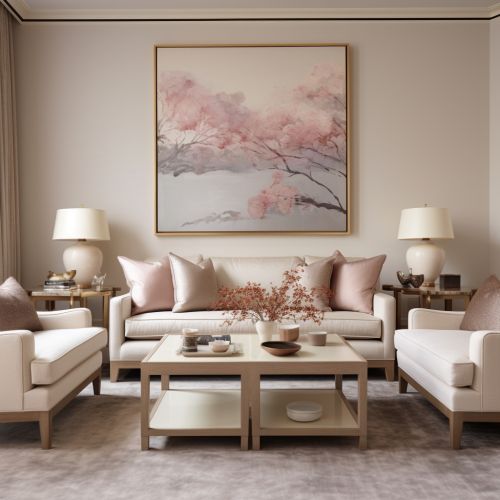Balance in Design
Introduction
Balance in design refers to the distribution of visual weight within a composition. It is a fundamental principle in the field of visual design, and it plays a crucial role in creating harmony, cohesion, and order in a design. Balance can be achieved through symmetry or asymmetry, and it can be either static or dynamic. It is a key element in many forms of design, including graphic design, interior design, and architectural design.


Types of Balance in Design
There are several types of balance in design, each with its own unique characteristics and effects.
Symmetrical Balance
Symmetrical balance, also known as formal balance, involves the arrangement of elements in a design so that they are mirrored on either side of a central axis. This type of balance is often used in traditional and formal designs, as it creates a sense of stability and order. However, it can also be perceived as static and less engaging than other types of balance.
Asymmetrical Balance
Asymmetrical balance, also known as informal balance, involves the arrangement of non-identical elements that have equal visual weight. This type of balance is more dynamic and interesting than symmetrical balance, but it can also be more challenging to achieve. Asymmetrical balance often involves the use of contrast, such as different colors, shapes, or sizes, to balance the visual weight of the elements.
Radial Balance
Radial balance involves the arrangement of elements in a circular pattern around a central point. This type of balance is often used in designs that need to convey a sense of motion or energy.
Crystallographic Balance
Crystallographic balance, also known as all-over balance, involves the repetition of similar elements across the design. This type of balance creates a sense of unity and cohesion, but it can also be monotonous if not used carefully.
Achieving Balance in Design
Achieving balance in design requires a careful consideration of the visual weight of the elements in a composition. Visual weight refers to the perceived heaviness or lightness of an element, which can be influenced by its size, color, texture, and position in the design.
Size and Scale
The size and scale of an element can greatly affect its visual weight. Larger elements tend to have more visual weight than smaller ones, so they need to be balanced with other elements accordingly.
Color and Contrast
Color and contrast can also affect the visual weight of an element. Brighter colors and high contrast elements tend to draw more attention and have more visual weight than elements with dull colors or low contrast.
Position and Alignment
The position and alignment of an element in a design can also influence its visual weight. Elements that are closer to the edge of a design tend to have more visual weight than those that are centrally located. Similarly, elements that are aligned with other elements can create a sense of balance and harmony.
Balance in Different Design Disciplines
The principle of balance is applicable in various design disciplines, each with its unique considerations and challenges.
Balance in Graphic Design
In graphic design, balance is used to guide the viewer's eye and create a pleasing arrangement of elements. It can be achieved through the careful placement of text, images, and other graphic elements.
Balance in Interior Design
In interior design, balance is crucial in creating a comfortable and aesthetically pleasing environment. It can be achieved through the arrangement of furniture, the use of color and texture, and the distribution of light.
Balance in Architectural Design
In architectural design, balance is often achieved through the symmetrical arrangement of architectural elements. However, asymmetrical balance can also be used to create dynamic and interesting architectural designs.
Conclusion
Balance is a fundamental principle in design that contributes to the overall effectiveness of a composition. Whether it's symmetrical or asymmetrical, static or dynamic, balance helps to create a sense of order and harmony in a design. By understanding and applying the principle of balance, designers can create compositions that are visually appealing and engaging.
